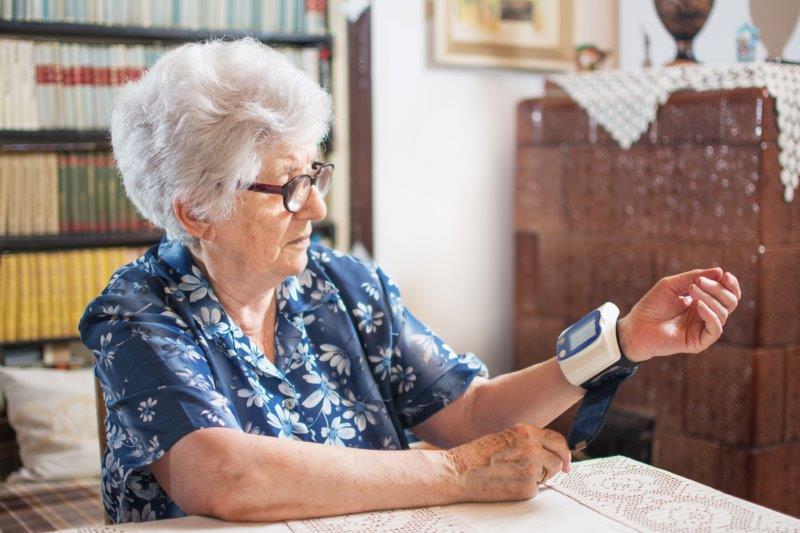“White coat syndrome” causing you adverse blood pressure results?
08th, Sep 2022

For some people visiting the doctor or the hospital increases our blood pressure. This can be due to anxiety and can result in false readings when the clinician measures your blood pressure. The study also suggests that the opposite may hold true for some people, with their blood pressure decreasing when in a surgery or hospital. Although researchers are more sceptical of this and think it might be linked to changes in activity. Either way the issue is that you could be putting yourselves at risk by having untreated high blood pressure (or hypertension in the medical world).
What is white coat syndrome?
For some people visiting the doctor or the hospital increases our blood pressure. This can be due to anxiety and can result in false readings when the clinician measures your blood pressure. The study also suggests that the opposite may hold true for some people, with their blood pressure decreasing when in a surgery or hospital. Although researchers are more sceptical of this and think it might be linked to changes in activity. Either way the issue is that you could be putting yourselves at risk by having untreated high blood pressure (or hypertension in the medical world).
Those of us who suffer with it, no matter how irrational we tell ourselves it is, are well aware that it is difficult to combat.
What causes high blood pressure?
We don’t know exactly what causes high blood pressure. For some it’s linked to other conditions or medication. For the majority of people, though, its development is thought to be influenced by things such as:
- Eating too much salt – remember it’s often a hidden ingredient in processed and fast food.
- Not getting enough fruit and vegetables
- Not being active enough
- Being overweight
- Drinking too much alcohol
- Age – the risk of developing high blood pressure increases as you get older
- Family history of high blood pressure
- Being of African or Caribbean origin
- Smoking
What’s happening?
The sort of things listed above are thought to affect the arteries causing them to narrow (the arteries are the vessels that carry the blood from the heart around your body)
Normally healthy arteries are flexible, strong and elastic. Their inner lining is smooth so that blood flows freely, supplying vital organs and tissues with nutrients and oxygen. Just like water flowing through a hosepipe.
Hypertension gradually increases the pressure of blood flowing through your arteries because they become less elastic and narrowed. This leads to the walls of your arteries not being smooth allowing lumps of fat (plaque) to become stuck to the walls, causing further narrowing and eventual blocking it completely cutting off the blood supply to that bit of your body.
If my blood pressure is a bit raised does it really matter?
Yes, it does. The British Heart Foundation estimates that there are around 7 million people with untreated raised blood pressure in the UK. This is important because it’s a “silent” killer. There are no obvious symptoms you can look out for. Left untreated it is instrumental in causing the following:
- Heart Attacks
- Stroke and Transient ischemic attacks (mini strokes)
- Kidney disease
- Heart Failure
- Enlarged left side of the heart
- Erectile dysfunction
What can you do about it?
The study recommends that doctors perform a 24-hour Blood pressure readings test. But doing so takes time and can be a bit hit and miss for those patients selected to undergo the test.
One of the easiest things to do is to purchase your own Blood pressure monitor so that you can check your blood pressure regularly. If you are concerned, then you can visit the doctor and get the test done to see if you need medication.
How do I take my blood pressure?
Your blood pressure readings are determined by your heart beat. It contracts to push the blood out, this force creates pressure on the arteries. This is called systolic blood pressure and is the top reading of the measurement.
When your heart rests between heart beats the pressure in the arteries is reduced. This is your diastolic blood pressure reading or the number on the bottom.
- You should try to take your blood pressure at the same time each day.
- Sit down and relax with no distractions for about 5 minutes before taking it.
- Roll up your sleeve and stretch your arm out straight, with your palm facing up. Put the blood pressure cuff over your bare arm, with the bottom of the cuff one inch (2.5cms) above your elbow. Make sure the arrow and the tubing are pointing to the middle of your elbow crease.
- Don’t pull the cuff too tight. You should just be able to pass two fingertips underneath the cuff. And check that the cuff is not tighter at the bottom or the top.
- Once you are comfortable, press the start button on the blood pressure monitor with your other hand. Don’t talk or move. You will feel the cuff tighten, and then start to deflate.
- Your reading will be shown on the screen.
- Record this reading in a note book with the date and the time of the recording.
- You should do this daily for the first 2 - 3 weeks when you first get your blood pressure monitor. If the readings are not giving you any cause for concern you can reduce checking it to once a week.
The meaning behind the blood pressure numbers:
90 over 60 (90/60) or less: You may have low blood pressure.
More than 90 over 60 (90/60) and less than 120 over 80 (120/80): Your blood pressure reading is ideal and healthy.
More than 120 over 80 and less than 140 over 90 (120/80-140/90): You have a normal blood pressure reading but it is a little higher than it should be, and you might want to speak to a healthcare professional about lifestyle advice.
140 over 90 (140/90) or higher (over a number of weeks): You may have high blood pressure (hypertension). See your doctor or nurse and take any medicines and advice they may give you.
If your top number is 140 or more - then you may have high blood pressure, regardless of your bottom number. See your doctor
If your bottom number is 90 or more - then you may have high blood pressure, regardless of your top number. See your doctor
If your top number is 90 or less - then you may have low blood pressure, regardless of your bottom number. See your doctor as low blood pressure can also cause problems.
If your bottom number is 60 or less - then you may have low blood pressure, regardless of your top number. See your doctor as low blood pressure can also cause problems.
If you have measured your blood pressure and are worried our GPs will be happy to see you and discuss it with you as well as initiating any tests you may need. Call us on 028 90 667 878 to book your appointment.
Source: Blood Pressure UK
Recent Articles

